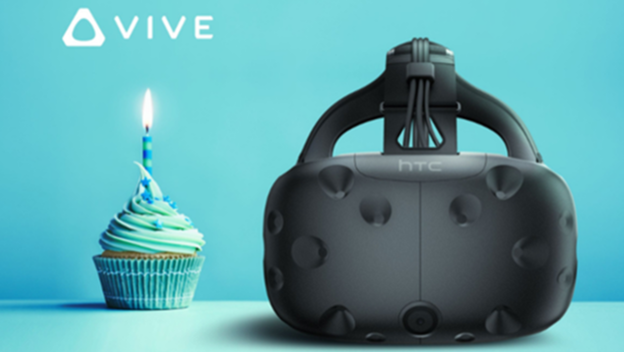If there’s one thing that I just can’t get enough of talking about related to the video game community, it’s virtual reality. I’ve said it before and I’ll say it again, virtual reality is the future. I grew up dreaming of the chance to fully immerse myself into video game worlds, and I still regularly hope to do that as VR tech begins to blossom. There are many players on the field at the moment, some well-known and a vast number more unknowns. It could take the entire span of this article to run through the various unknown VR candidates and all the aspects of the popular ones. For now, let’s look at the “popular” VR names, such as the HTC Vive, the PSVR, and Oculus Rift. These are the three that have been tossed around pretty much since the inception of this current trend.
We’ve narrowed that down to a pretty manageable sample size, but I’d like to narrow it even further. First off let’s talk about the black sheep in this trio of VR babies, the Oculus Rift. Oculus came strong out of the gate as one of the first announced virtual reality headsets this time around. It became available a lot quicker than its competitors, but has suffered a lot since then. Oculus Rift had a shoddy release, with many buyers waiting seemingly forever to get their headsets. As far as this writer is aware, it didn’t have much by way of developer support either. While Oculus Rift was a household name, especially thanks to its purchase by Facebook, it was not for the right reasons.
PSVR is the middle child, the prosumer choice of the bunch. It’s pricy, but not too pricy. It’s got quality graphics, but nothing too crazy. It’s available now to all those with a PS4 or PS4 Pro. There are definitely a few hiccups in the PSVR, like the fact that you can’t utilize HDR/4K graphics on your TV when it’s plugged into your PS4 Pro. However, for the most part, it works as advertised.
HTC Vive is the last on my mini list of VR options, and by far my favorite. Let’s start with the cons though. There are some things about the HTC Vive that are going to cause accessibility problems for people. For one, you have to have a PC that is VR ready. I knew this was going to be something that I would want to be prepared for when I built my most recent PC, but it just wasn’t in the budget. This same issue is going to come up for a lot of people. It’s just not simply in the average household’s budget in general. The other thing that is a slight issue for the Vive is the play space. There are two cameras in the Vive set-up that need to be placed on opposite corners of a room or playing space. This allows the system to know where players are within the space. Not everyone has room for this sort of thing. Studio apartments are not always going to have enough room, and my RV definitely doesn’t have enough.
That might seem all doom and gloom, but there is so much more going for the HTC Vive than there isn’t. At the very least the Vive will be able to move to your various computers fairly pain free. If you’re anything like me you’re bound to upgrade your PC before you’ll get a new console. In which case, your HTC Vive will move along with you, and take advantage of the added processing power your new rig will provide. There’s no telling whether the PSVR will be able to move to new PlayStation consoles, and at the least it already has issues with the lack of processing power in the PS4/PS4 Pro.

The other absolutely fantastic thing about the Vive that gives it a huge leg up on its competitors is the controller scheme. The HTC Vive controllers are super easy to get used to. Sure, you might bump the front of it into the walls a few times as you’re getting used to knowing where the play space is, but there’s always a slight learning curve with new tech. The fact of the matter remains that the Vive controllers are light enough to not feel like a burden to hold. Yet they are weighty enough that you’ll feel like you’re really wielding that sword in your favorite RPG.
There’s also the positive side to the playing space the Vive provides. Not only does it allow you to actually walk around in your virtual reality games, which is already awesome, it gives you vertical playing space as well. If you’re playing an adventure game and want to take a look under that table for clues, you can actually get down on your knees and look. Playing an RPG and you just can’t get enough of how beautiful the sky is? Lie down on the floor and watch the clouds for a while.
There are a great many reasons that the HTC Vive is arguably one of the best virtual reality options out there at the moment. These are just a few, but to me they’re the greatest examples of why the Vive would be my first go-to purchase in the current VR landscape. With the upcoming Project Scorpio promising that it will have some sort of virtual reality capabilities, HTC Vive might have to watch its back. But seeing as how Microsoft hasn’t released much information on the Scorpio’s virtual reality options, Valve and HTC might still be the kings of virtual reality in the coming future. What’s your favorite current virtual reality option? Let me know in the comments!
